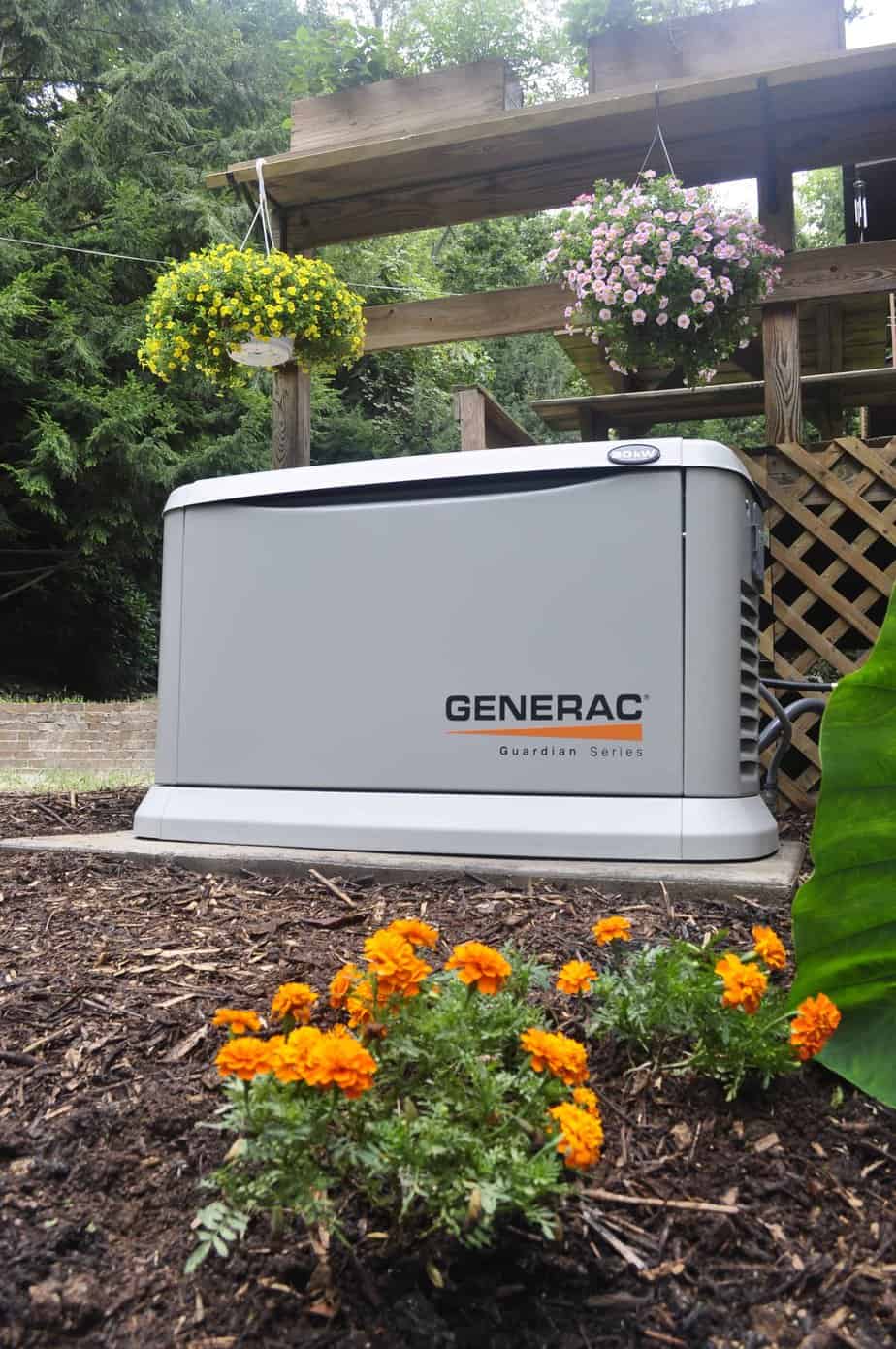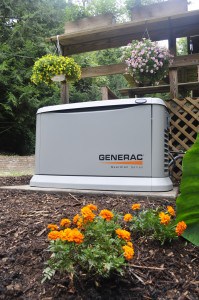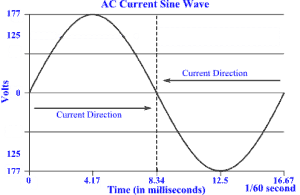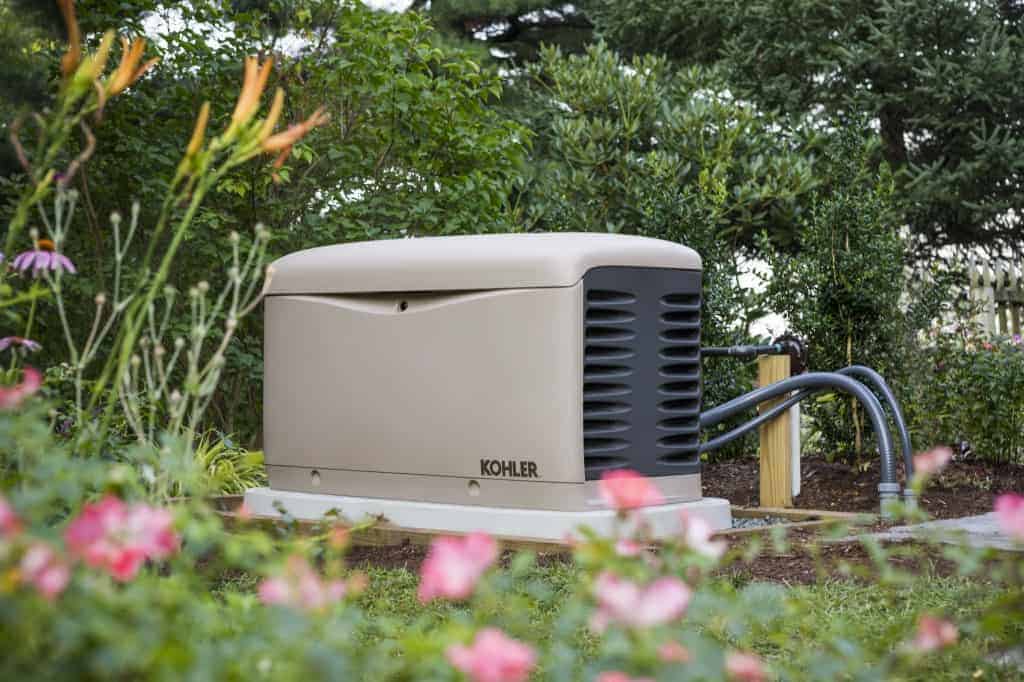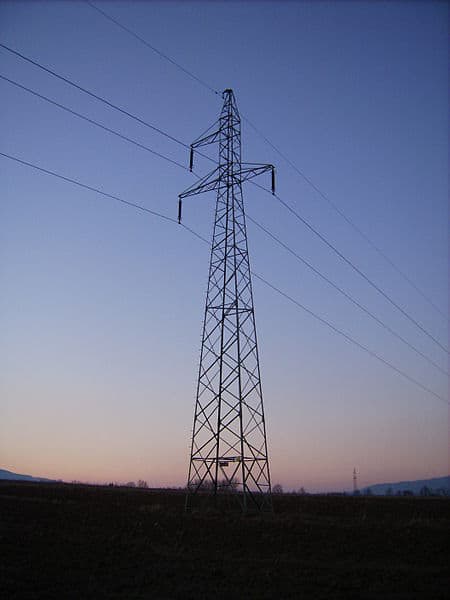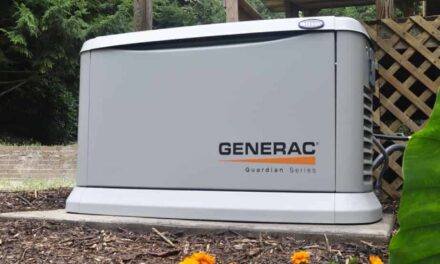Read just about any product specification for a standby generator and more than likely you’ll run across words and phrases like “Total Harmonic Distortion,” “Frequency Variation,” “Harmonics,” “Sine Waves,” “Smooth Waveform,” and “Voltage Regulation.” Almost certainly you’ll find the phrase “Utility Grade” or “Utility Quality” power.
Specifications like these mean a lot to electrical engineers, generator salespeople, and music aficionados, but they mean a lot less to the average electric utility customer. They are all related to the type of electrical power used in homes, businesses, on farms, and in industry― Alternating Current, or AC.
Alternating Current
The electricity from a battery only flows in one direction and for the purpose of discussion, has a constant voltage level. When the electricity is turned on, the voltage rises immediately to the output voltage and stays there until turned off, or the battery is depleted. This form of electricity is called Direct Current, or DC.
Alternating Current (AC) is much different. When turned on, it flows in one direction while the voltage gradually rises to a peak, then the voltage gradually subsides back to zero. At the zero point, the direction the electricity is flowing reverses to flow in the opposite direction; again the voltage gradually rises to a peak and then subsides toward zero. The direction reverses again and the cycle repeats.
In North America, the entire cycle repeats 60 times every second. In other words, the Frequency of the cycle is 60 Hertz. A steady, reliable frequency is important to motors and electronics including televisions, radios, and computers.
Frequency variations can cause problems with electronics, which is why standby generator manufacturers advertise their product’s ability to maintain the frequency at 60 hertz.
Clean Power
Unvarying frequency is not the only issue that can plague electrical power. Distortion or variation of the waveform produced by the power supply can alter the actual voltage delivered. Electronic circuits react differently when the waveform isn’t perfect. Other problems include voltage sags, drops, surges, and spikes.
Sags are a momentary dip in the voltage level and can be caused by the sudden application of a heavy load. Drops occur when power consumption increases. A surge is the exact opposite of a drop, but is typically short lived. Spikes are momentary instances of high voltage.
Signal distortion―when the sine wave is warped by noisy appliances, large motors, or even solar interference―causes the power level to vary unpredictably.
Power from the utility isn’t perfect. Throughout the day, voltage levels change as consumers use more or less electricity. Before dawn, when power use at the lowest, voltage is at the highest level of the day. By late afternoon, voltage might be eight to ten volts lower. Problems with the distribution lines, such as a branch hitting a wire, can cause spikes or drops, or even outages.
Even though the utility voltage isn’t perfectly clean, the frequency remains constant at 60 hertz and the voltage level stays within an acceptable range that meets consumer needs.
Standby Generator Power
The power output from a standby generator is clean, with a near perfect sine wave and frequency. The engine spins the generating unit at a constant speed―usually 3600 or 1800 RPM―which maintains the frequency of the power supply. Voltage is regulated at a specific level. Both factors are continuously monitored by the generator controller and adjustments made in a fraction of a second.
Free of the vagaries of distribution lines, spikes and surges are nearly nonexistent unless introduced by an appliance within the home or business. The generator’s controller reacts to changes in power requirements which minimizes drops and eliminates sags.
Utility Grade – Utility Quality
Standby generators supply power to homes and businesses when the utility cannot. The quality of power they deliver has to meet the same rigid standards that apply to the electric utility company. In most cases, because the generator isn’t subject to the outside influences of the power grid and distribution system, the generator power may be cleaner and have less noise than that delivered by the utility.

